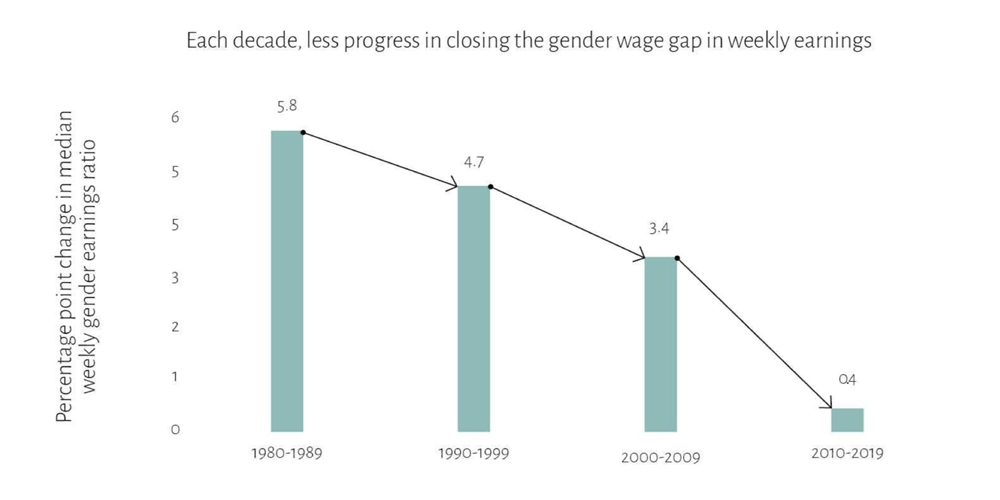Progress in closing the gender pay gap between women and men has slowed considerably in the last decade, according to the latest report from the Institute of Women’s Policy Research (IWPR) in the US. Although the wage gap has narrowed, since weekly data was first collected in 1979 – from 62.3% to 81.5% today – most of that progress was actually made in the 1980s and 90s, confirms IWPR.
Over the last decade (2010-19), the weekly gender gap narrowed by less than a half a percentage point, compared with 3.4% in the previous 10 years (2000-09), 4.7% between 1990 and 1999, and 5.8% during the 10 years prior to that (1980-89).
“Closing the wage gap is essential to reducing poverty and improving economic security for women and their families,” states C Nicole Mason, President and CEO of IWPR. “This rate of change is unacceptable. It is particularly unacceptable for the many women of colour who face even larger earning losses each week.”

TACKLING INEQUALITY
These earning ratios are for full-time workers only. When all workers with earnings are included, the gap in earnings is actually much larger because women are more likely than men to work part-time or take time out of paid work to care for children or other family members. Over a 15-year period (between 2001 and 2015), female workers’ earnings were less than half of men’s earnings (just 49%) – with a wage gap of 51%.
“This is Woman’s History Month – let’s learn from history,” adds Mason. “In the 1980s and 1990s there was more emphasis on enforcement, and on improving women’s share of good jobs. A lot of progress was made, particularly for White women. Let’s return to a time when policies to tackle women’s inequality at work were arguably more of a priority.”
Click here to access the detailed report.







































